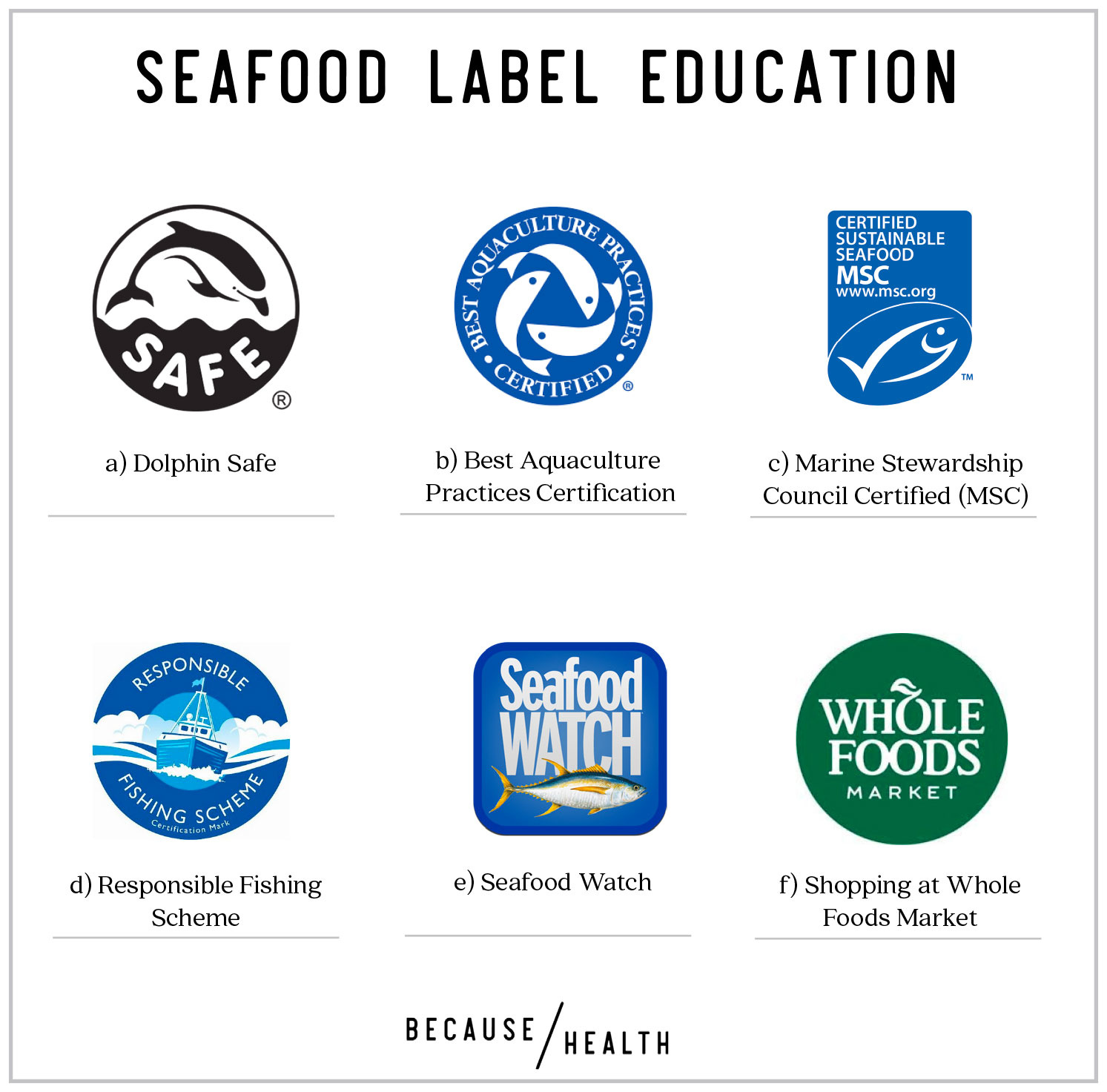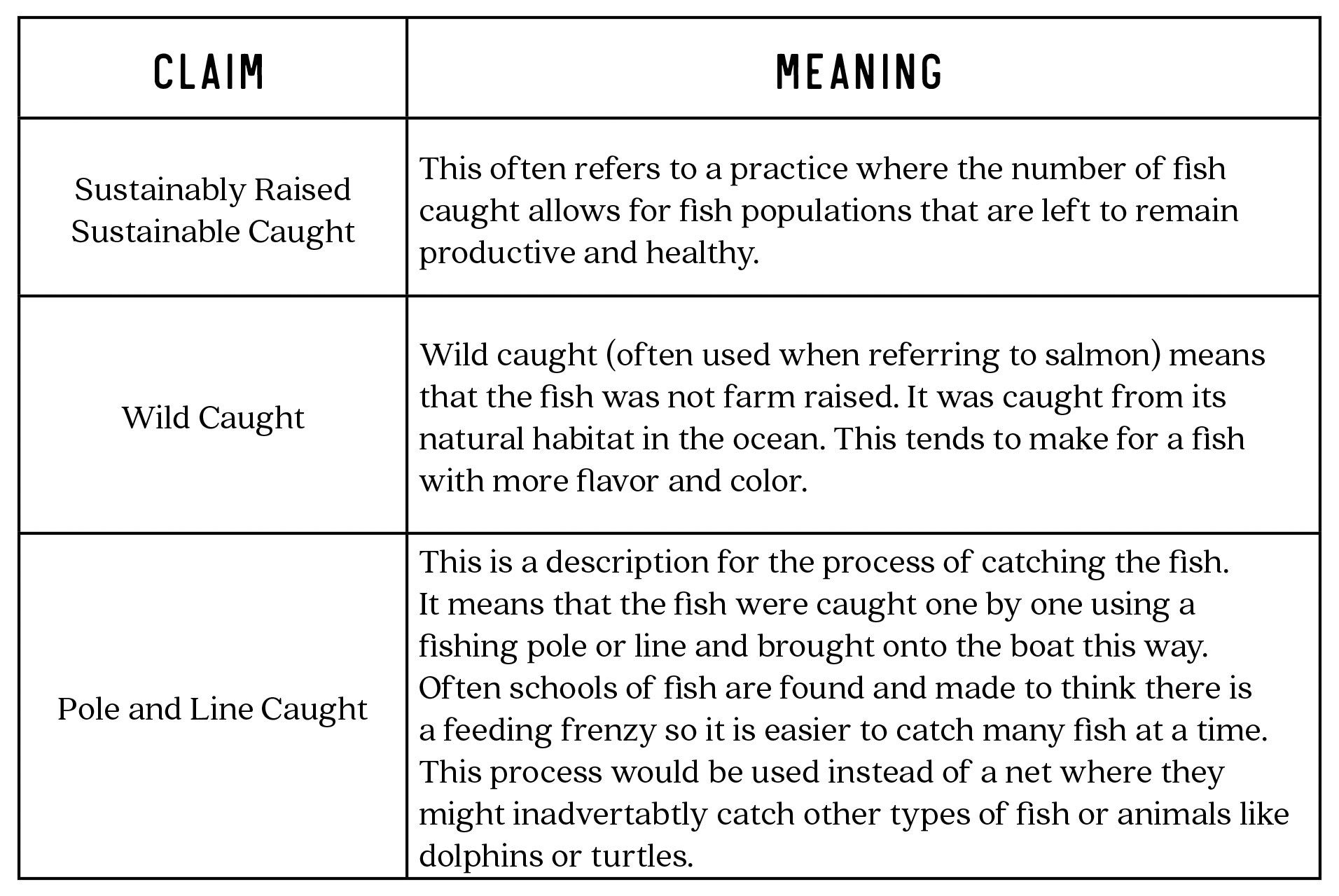Label Education: Seafood
what does it all mean from fresh to frozen to canned seafood
Buying seafood can be tough to navigate. There are so many varieties and many different considerations to make when it comes to choosing the right one: health warnings, how it’s caught, if it is sustainable or not. To try and make you next trip to the fish counter a little easier, we pulled together a list of common labels and certifications or programs that can give you a bit of insight into what you are buying.
None of the labels or certifications we talk about here are taking into account things like mercury levels or other toxics. If you are specifically interested in choosing the best seafood to avoid these health concerns, check out this calculator from EWG.
Certifications
These certifications are overseen by a company or organization outside of the company catching and supplying the fish. They tend to have more strict standards and can be checked by the organizing body.

a) Dolphin Safe
This is set up by NOAA and associated mostly with Tuna. It has to do with the Dolphin Protection Consumer Information Act, which mandates a tracking program for Tuna caught in the Eastern Pacific Ocean. It also has reporting requirements for fishing to assure that dolphins weren’t harmed.
b) Global Aquaculture Alliance’s Best Aquaculture Practices Certification
4 star certification process that assesses the whole process from feed, to hatchery, to farm, to processor. A four star product was certified at each step. They also consider the health of the animal and the consumer, social responsibility toward the people farming and processing the fish, and respect and protection for the surrounding communities.
c) Marine Stewardship Council Certified (MSC)
Certification based on three main principles: Sustainable fish stocks, minimizing environmental impacts, and effective management.
d) Responsible Fishing Scheme
A certification process that audits compliance on board fishing vessels and looks at crew welfare and ethical criteria as well as responsible catching practices.
e) Seafood Watch
Comes from the Monterey Bay aquarium. They have lists depending on where you live that lay out which fish are best and which to avoid based on overfishing practices and those that may be of health risk for high levels of mercury or PCBs.
f) Shopping at Whole Foods Market
Whole Foods sets petty strict standards when it comes to the seafood that they source for their stores. For fish and shrimp they require: No antibiotics or growth hormones; No poultry or mammalian products in feed; Protecting sensitive habitats near fish farms and monitoring of water quality; No added preservatives like sodium bisulfite, sodium tri-phosphate (STP), and sodium metabisulfate; No genetically modified or cloned seafood; and third party audits.
For mollusks (like clams, oysters, mussels, and scallops): Monitoring sediment on the sea floor to evaluate the health of ecosystems under the farms; No pesticides; No genetically modified or clones seafood; Water quality assessments; Protection of coastal environments; Traceability from farm to store; and third party audits.
Label Claims
These labels are often ways to distinguish between the sourcing of fish and how they were caught. They tend to mean pretty much the same thing by all sources, but the definitions are more commonly agreed on rather than being true certifications or standards.

